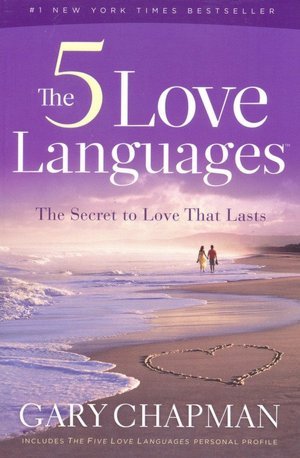
The Scene staff
The book “The 5 Love Languages” by Gary Chapman has sold more than eight million copies and has been translated into nearly 50 languages.
Chapman believes that people can better love one another if they understand that everyone has a “primary love language” that makes them feel the most loved.
The book outlines five languages: Words of Affirmation, Quality Time, Gifts, Acts of Service and Physical Touch.
After a few brief chapters about Chapman’s experience as a marriage counselor and his thoughts and ideas on love, he describes each love language with stories and examples. Chapters end with questions and space for self-reflection.
Each love language is pretty straightforward. For example, people with the language of Quality Time feel most loved when their significant others spend time with them.
One love language that might be met with skepticism is Gifts. In our society, anyone in a relationship who wants to receive gifts may be seen as a “gold digger.” Chapman disagrees with that assumption, arguing that some people just prefer “visual symbols of love.”
So how does a person identify his love language? According to Chapman, you can’t just pick one that sounds the most appealing.
You must complete a “love language profile” with 30 multiple-choice questions, conveniently located at the end of the book. It isn’t an exact science, and it kind of reminds me of the quizzes in Cosmopolitan magazine each month.
I answered all the questions and encouraged my boyfriend to do so, even though he hadn’t read the book. I printed a copy of the profile that I found on 5lovelanguages.com and briefly explained the theory behind the book and its love languages.

My boyfriend shrugged and quickly answered the questions. We tallied our scores and discussed our love languages. Normally, I feel that any conversation between people in relationships about how to love each other is productive, but this one didn’t seem to accomplish much.
I’m not saying Chapman’s book couldn’t be a helpful resource for couples. He gives tons of examples of how he saved marriages by helping husbands and wives identify their love languages.
Filling out the profile was a great icebreaker for my boyfriend and me. It opened the door to a conversation that otherwise might have been slightly awkward.
Many times, people in relationships have a hard time explaining what they want from their partners for fear of seeming selfish, needy or like a nag. Reading this book with your partner or just answering the profile questions can alleviate that concern.
My biggest issue with Chapman and “The 5 Love Languages” is that he focuses too much on the person with the love language. Each chapter includes tips and ideas on what to do if your partner has that language.
This leaves little responsibility to the person with the love language and gives no relief to the person who is supposed to be “speaking” it. In other words, the book doesn’t prevent or solve a “love-language barrier.”
Just because someone’s love language is Physical Touch doesn’t mean that his partner will immediately know how to speak that language, especially if the person doesn’t speak it himself.
If someone has the love language of Acts of Service, it most likely means that not only is that how he prefers to be loved, but it is how he shows love also.
I can see how this could create more problems in a relationship. One person is speaking the only love language he knows, but he’s being told to learn and speak a new one.
I think knowing your love language is all fine and good, but it’s equally important to know what language your partner is already speaking. He may have been speaking Quality Time for years when your language is Gifts. This does not diminish his love.
Je t’aime (French), Ich liebe dich (German) and Te amo (Spanish) all mean “I love you.”
